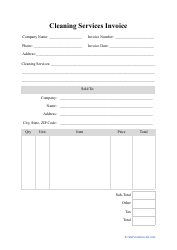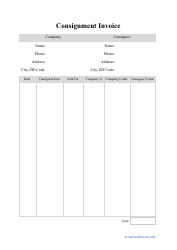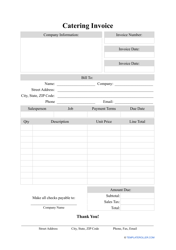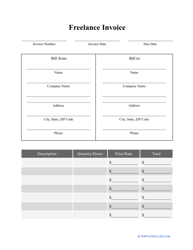How to Invoice for Freelance Work: Free Freelance Invoice Template

If you’re a freelancer or independent contractor, it’s up to you and you alone to figure out how to get paid for the services you provide to your clients. Let’s say that you’ve already provided your customer with a quote to let them know how much the project will cost or have signed a freelance contract. Your next step would be to come up with a comprehensive and auditable invoice in order to request payment from your client.
How to Invoice as a Freelancer?
A freelance worker is an individual who picks up multiple projects for different companies without being legally employed at any of them. Coming up with a good freelance invoicing strategy is thus key to getting paid - both at all and on time.
Your invoice for freelance work should include an itemized list of the goods and services you provided to the client along with the amounts due and taxes levied. The header of the invoice must provide information related to your and the client’s taxpayer identification numbers, shipping and billing addresses, bank account information, and credentials.
As a freelancer, you will be responsible for the entire process associated with invoicing. Here are some tips for doing it right:
- Pay close attention to the contract you sign. Your contract - be it a freelancer agreement or job offer - should clearly state your rates or the cost of the entire project. Review the payment terms and only sign if you agree with them completely. Make sure that the terms cover the payment methods, payment timelines, and penalties (if any).
- Describe your deliverables in detail. Use your invoice to provide a description of each of your deliverables to make sure that your client knows (and remembers) what they are being charged for.
- Consider automating your invoices. Research online invoicing applications or downloadable software that can help you make use of ready-made templates to save your time. Specialized invoicing and bookkeeping software will also help you monitor overdue invoices, keep track of payments, and log any due taxes.
- Don't be afraid to follow up. Make it clear that you’re open to answering any questions regarding the invoice or the payment. Send your invoice along with a friendly email or cover letter that includes a thank you note for your client. Don’t hesitate to reach out if your client fails to pay on time: a gentle reminder may help them get on the right track.
How to Create an Invoice for Freelance Work?
Your freelance invoice should, at the very least, feature the following parts:
- Your name and logo (if any).
- Your contact details, mailing address, and tax identification number.
- Your client’s identifying information.
- The date and number of the invoice.
- A list of sold goods or provided services with a price for each line.
- Tax rate and amount and the total amount due.
- Your payment details.
- Your signature or your company’s official seal.
Consider creating a Freelance Invoice template that you can later use for different projects. The template will need to be customizable and universal, so that you can easily tailor it to the specifics of the work at hand.
How to Write an Invoice for Self-Employed?
The details that you will have to include in your self-employed invoice will largely depend on the nature of your business and the type of project you are tackling.
If you are selling goods, you might want to invoice your clients twice: once as a prepayment and another time as soon as the goods are delivered. If you’re providing a service, it may be a good idea to have your client pay every time you hit a certain milestone in your project. Alternatively, you can invoice your client for the full amount due on the completion of your work.
Long-term or multi-faceted projects will need to follow a uniquely-tailored invoicing schedule that must be discussed with the client in advance and will need to be reflected in the contractor agreement that you sign. Make sure that you’ve clearly stipulated your payment terms before beginning any work at all. Being clear when it comes to the timeline of payments and scheduling your invoices accordingly will help you eliminate most of the stress when it comes to your invoicing strategy.
Related Topics:






